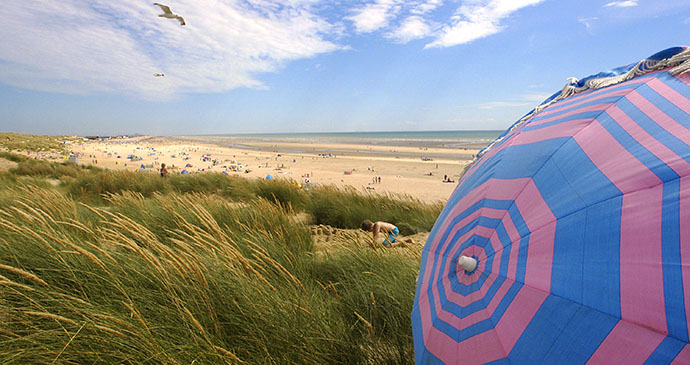
This region has numerous reminders of invasions both threatened and actual. Most famously it was the landing point of the Normans in 1066 in the last successful invasion of the mainland, from which they went on to defeat the English at what is now called Battle and change the course of English history.
Where the South Downs end at Beachy Head, a stretch of coast extends eastwards to the Kent border, comprising the most diverse seaboard in Sussex. Take a boat cruise from Eastbourne and stroll its gorgeous Victorian pier, tuck into fish and chips by the net houses of Hastings Old Town after an exhilarating walk over the adjacent sandstone cliffs, wander through the cobbled streets of Rye and cycle your way along the unheralded coastline west of Bexhill’s astonishing 1930s De La Warr Pavilion.
This region has numerous reminders of invasions both threatened and actual. Most famously it was the landing point of the Normans in 1066 in the last successful invasion of the mainland, from which they went on to defeat the English at what is now called Battle and change the course of English history. Then in medieval times it was a confederation of wealthy ports supplying naval craft and men to the monarch in return for certain privileges, including tax exemption and legal jurisdiction over criminals. These Sussex and Kent towns were known as the Cinque Ports, which originally numbered five, but the list later grew to include Hastings, Rye and Winchelsea.
The area is instilled with a potent sense of the past, with Normans in evidence at Pevensey Castle (originally Roman) and Battle Abbey, and magnificent moated castles at Herstmonceux and Bodiam – the latter reached by the Kent and East Sussex Railway, and easily visited in conjunction with Great Dixter, the great 20th-century horticultural creation of Christopher Lloyd. Camber Sands is by far the premier beach in East Sussex, and a bike ride away from Rye. Some former coastal settlements now stand well inland as the sea has silted up over the centuries, leaving areas of rich, marshy farmland that have a quiet, brooding beauty – seen at its best around Rye Harbour nature reserve, the Royal Military Canal between Winchelsea and Cliff End and the Pevensey Levels.
The High Weald Area of Outstanding Natural Beauty extends across part of this area, including Bodiam, Great Dixter, Battle and Hastings.